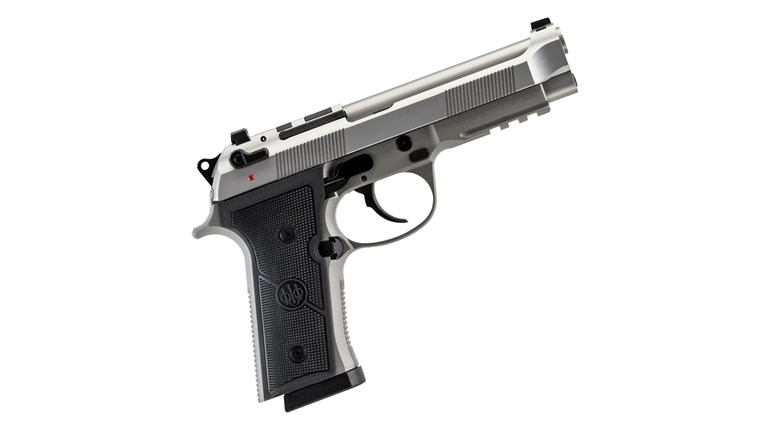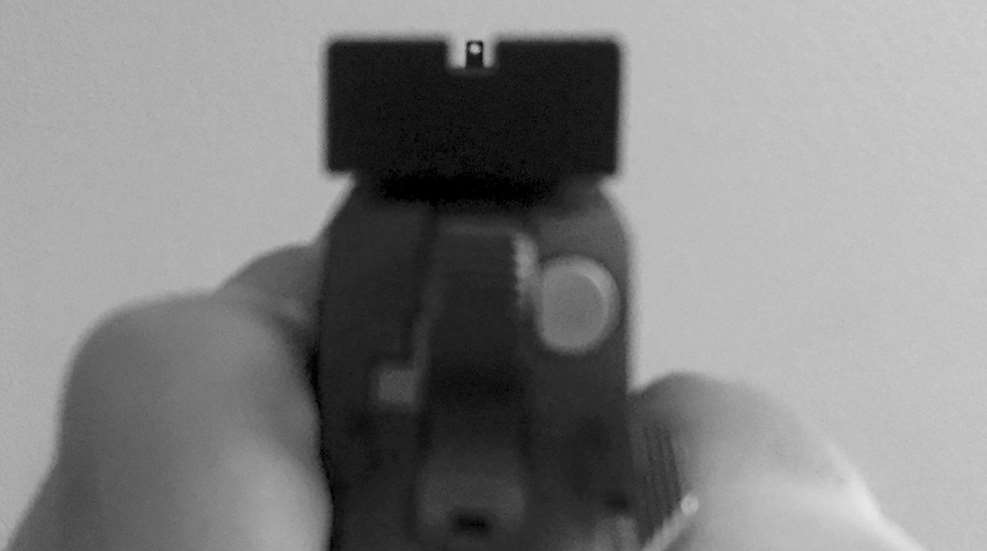
Above: Dry firing against a blank wall helps you learn to call your shot. This shot would have gone to the right.
For years, I had heard the phrase “call your shot” and never really understood it. Now I do it regularly, even during the high speed of competition. You can do it too! Hopefully, I can help get you there.
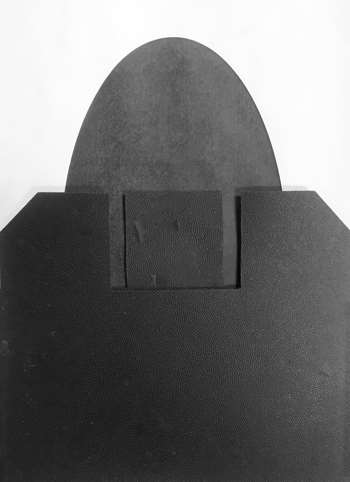
When you shoot a target and the holes or hits are not in the area you wanted or expected them to be, does it cause you to question what’s happening? Many times people begin to question the gun and the ammunition long before blaming themselves. Usually it's “the nut behind the grip” causing the accuracy issues. Every so often, my nut gets loose too!
Operator error happens. Quite often we don’t even realize that we are doing something wrong. Funny but true, it’s really hard to see the target and bullet holes with that big ugly gun in the way. Shooters have a bad habit of wanting to see how they did before the bullet has even left the barrel. This leads to lowering the gun to see the shot placement at the instant we tell our trigger finger to shoot.
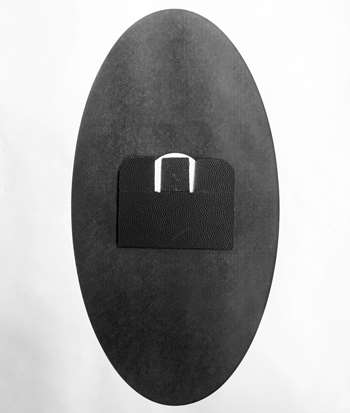
When teaching, I watch closely what students are doing. When I see a shooter not getting the hits he or she wants, I ask them two questions.
1) Where were you aiming—specifically?
2) What did you see when the gun went off?
To keep this brief I’ll address the right-handed 70 percent. Left handed shooters will experience the exact opposite or a mirror image of this. Gearing this toward iron sighted handguns also keeps it simple for me.
Generally, shots end up low and/or low left. How low the hits are depends on the shooters’ sight picture and/or distance from the target. It also depends on their level of anticipation. Anticipation is caused by being in a hurry to see how you did or by an aversion to recoil and noise.
Question 1
Where are you aiming? When I shoot any target I cover it or cut it in half with proper sight alignment. If you intend to learn something here, have an unloaded gun ready for dry fire as you read on.
If I’m shooting at a 3-inch dot at 20 feet and in, I almost completely cover it with the sights and fire my shot. This will generally put my hits in the center to the top third of the circle. You have to cover what you want to hit. If you can see the target you are most likely already low depending on target size and distance.
Question 2
What do you see when the gun goes off? When your gun goes off, you need to see the above sight picture. What I do to verify this is have the shooter hold the gun and take a sight picture with their finger off the trigger and alongside the frame. I press the trigger while I watch their eyes and feel their body language. A majority of the time when the round goes off, it goes exactly where it should. The shooter still drops the gun quickly to see how they did, but since I pulled the trigger, it’s not until after the bullet has left the barrel, because they didn’t know exactly when it would go off.
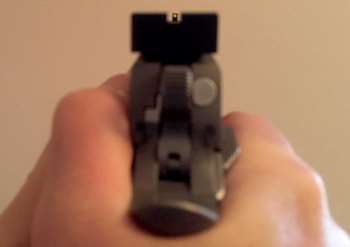
It takes time for the physical action of shooting to happen even though we said, “Now!” in our brain. We see what we want to see, then our nervous system has to respond to the visual stimulus, and the physical trigger squeeze has to happen, and the physics of the firearm have to take place in sequence. All of this occurs after the brain said, “Now!” Add to this that each bullet hole is like a birthday present we can’t wait to see, and we end up with a major loss of focus from sights to target at the moment we fire.
On a handgun with a standard trigger, smacking it hard and fast and using your whole hand to squeeze the trigger will usually cause a major deviation of impact. Isolate the trigger finger. Slow or fast, steady pressure is best.
How to call the shot
No matter what type of sights or weapon system, you have to see the sights when the gun goes off. Properly aligned sights, whether it’s a crosshair or iron sights are properly placed on the intended target when the gun goes off. Following those sights into recoil will get the hit. You do your job and the gun will do its job. Then you’ll know exactly where the bullets are going.
Dry fire practice is completely fine with most modern firearms, even with some of today’s rimfire guns. Having a hard focus on the sights at the time the hammer falls will teach you a lot about what you are doing wrong or right.
Dry practice against a blank wall so you only have the sights to watch. Then you can add a target to create a picture.
If you see the sights come out of alignment or the sight picture change as you squeeze the trigger, you need to adjust your grip pressure or trigger finger placement. One or both usually help to keep from disturbing the sights, their alignment and sight picture.
You can learn to call your shot by combining what you saw when the gun went off with what the target shows you during practice. I know that if I see a bad shot when I’m firing fast, I fire another round.
The more you learn about why you miss, the more you’ll understand about what it takes to hit.
Readers may want to check out Chris Cerino's previous articles in SSUSA on ammo cost, training yourself, the difference between training and practice, confidence and complacency, and how details can make the difference.













